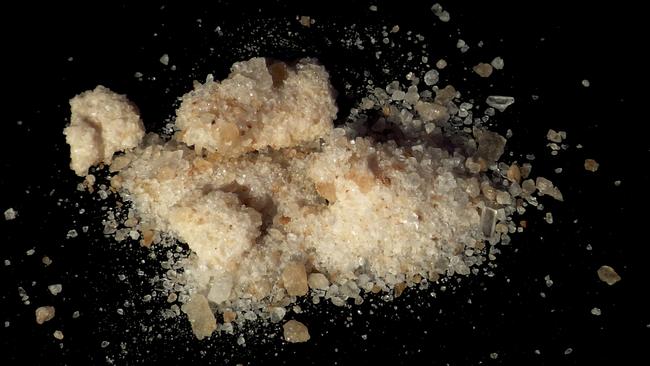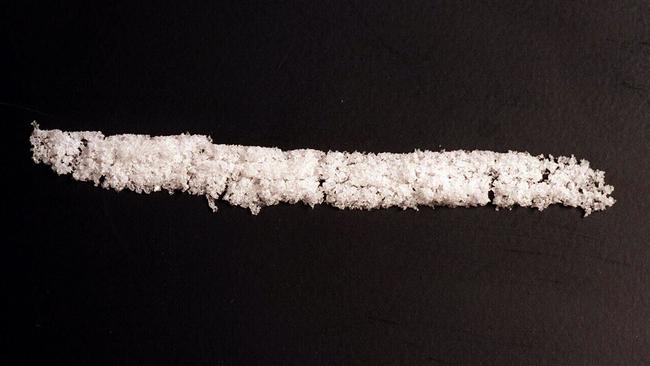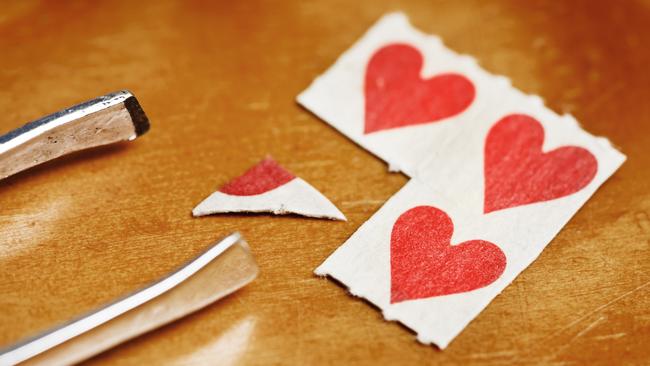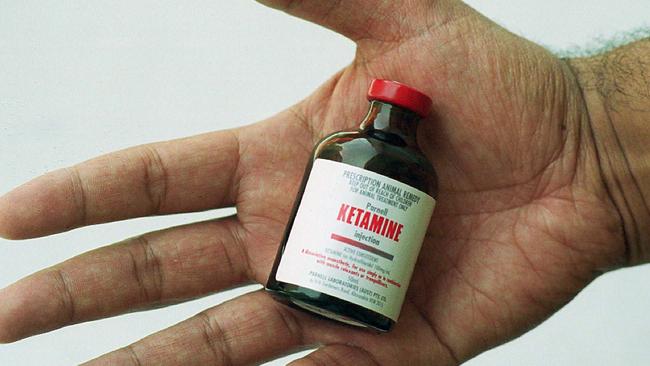Everything parents need to know before talking to kids about drugs
Another drug-related death and multiple hospitalisations following a dance event in Sydney has highlighted a growing problem, with mental health advocates saying parents need to act now and have a conversation with their children about drugs. HERE’S EVERYTHING YOU NEED TO KNOW.
- Video of victim dancing before death
- Third fatal overdose in as many months
- Hardstyle DJs from overseas head for Sydney
Another drug-related death and multiple hospitalisations following a dance event in Sydney has highlighted a growing problem.
While the government’s solution has been to introduce tougher penalties and a higher security presence at events, mental health advocates believe a better way to solve the issue is through education.
ReachOut chief executive Ashley de Silva said parents need to have an “open and direct” discussion with teenagers about the consequences of drug use.
“Some people might be concerned that talking about drugs may encourage children to use them, but there has to be acceptance that teenagers could experiment regardless,” he said.
“It’s a serious topic that could be a little off-putting, so we suggest using different ways to connect that feel more casual.
“Maybe go for a drive and have the chat sitting side-by-side and looking forward.”
Mr de Silva said while most discussions would be pre-emptive, if parents suspect their child is already using drugs, it’s not too late to have a conversation.
“It pays to be open and direct about the situation, if you want to help a teenager, you need to explain why you want to have the conversation and steer away from being judgmental.”
DRUGS PARENTS NEED TO KNOW ABOUT:
MDMA (Molly, M, ecstasy, pingers, pills, caps, dingers, E)

MDMA (3-4 methylenedioxymethamphetamine) is a synthetic, psychoactive drug that holds a chemical structure similar to stimulants and hallucinogens.
Molly is the common street name for the powder or crystal form of MDMA which is often sold in capsules, while ecstasy is the common street name for the drug sold in a pill/tablet form — however not all drugs sold as ecstasy contain MDMA.
The drug is usually swallowed, although it can also be snorted, smoked, injected or inserted into the anus.
MDMA stimulates the release of the neurotransmitters such as serotonin from the brain, with the high lasting for around three to six hours.
The high is known for producing feelings of increased pleasure, emotional warmth and energy, while it also creates distorted sensory and time perception.
Many fatal cases linked to MDMA are due to abnormally high doses, prior health complications, overexertion, dehydration or the use of the drug with other medications.
High doses of MDMA can cause users to experience:
• Nausea and vomiting
• Chest pain
• Tremors
• Increased body temperature and heart rate
• Seizures
• Extreme paranoia, anxiety, panic and agitation
• Hallucinations and delirium
• Necrosis of liver and heart tissue
COCAINE (Coke, Charlie, bags, blow, nose beers)

Cocaine is a strong stimulant that affects the central nervous system by speeding up the activity of certain chemicals in the brain, producing a feeling of increased alertness, reduced fatigue and confidence.
The drug is commonly snorted, although it can also be injected or rubbed into the gums, with the effects of cocaine usually lasting between 15 minutes to an hour.
Because cocaine is very addictive, users can experience withdrawal symptoms when they try to stop or reduce use.
Symptoms of withdrawal include craving cocaine, agitation, difficulty sleeping and anxiety.
High doses of cocaine can cause users to experience:
• Tremors and muscle twitches
• Nausea and vomiting
• Changes in the heart rhythm/heart attack
• High temperature
• Seizures
• Stroke leading to coma and death
• Cocaine psychosis — paranoid delusions, hallucinations and aggressive behaviour
GHB (G, fantasy, grievous bodily harm (GBH), liquid ecstasy)

While known as “liquid ecstasy”, GHB (gamma-hydroxybutyrate) is very different and acts a nervous system depressant with sedative and anaesthetic effects.
GHB is usually sold in small bottles or vials containing a colourless/odourless liquid and is commonly swallowed, although it can be injected or inserted anally.
The party drug is known to produce feelings of euphoria, relaxation and sociability, while also
lowering inhibitions and increasing sex drive. Effects of GHB are felt within 15 minutes and last around three hours.
GHB dependence can be both psychological and physical, usually starting about 12 hours after the last dose.
High doses of GHB can cause users to experience:
• Dizziness
• Vomiting
• Tremors
• Loss of co-ordination
• Confusion, irritation and agitation
• Hallucinations
• Seizures
• Coma
• Respiratory arrest
LSD (Acid, trips, tabs, microdots)

LSD (Lysergic acid diethylamide) is a synthetic chemical belonging to a group of drugs known as hallucinogens, which change users perceptions of reality.
In its pure form LSD is a white odourless crystalline substance, but is often sold soaked into blotter paper or sugar cubes.
LSD can make people experience closed and open-eye visuals, ego dissolution, euphoria and a sense of connectedness to other life forms.
The high users will experience will usually last between 12-16 hours.
High doses of LSD can cause users to experience:
• Panic
• Paranoia
• Increased risk taking
• Psychosis
ICE (Crystal meth, crystal, glass, shard)

Ice is a stimulant drug that’s stronger and more addictive than the powder form of methamphetamine known as speed.
The drug usually has the appearance of small, clear crystals, with ice primarily smoked — users can also inject, swallow or snort the substance.
Users experience a high lasting between four to 12 hours, with the drug offering increased euphoria and sex drive which is felt immediately after use.
Due to the potency of the drug, it can take several days to come down from using ice, with paranoia, hallucinations, confusion and irritability all symptoms suffered in this time.
High doses of Ice can cause users to experience:
• Racing heartbeat and chest pain
• Breathing problems
• Fits or uncontrolled jerking
• Extreme agitation
• Sudden, severe headache
• Unconsciousness
• Stroke, heart attack or death
AMPHETAMINES (Speed, uppers, goey, whiz)

Amphetamines are a potent and addictive central nervous system stimulant which can be sold as powder, tablets, crystals and capsules.
There are also a number of amphetamines which are legally prescribed by doctors to treat conditions such as attention deficit hyperactivity disorder.
The substance is often white or brown, with traces of grey or pink.
Speed causes users to experience euphoria, confidence and an increased sex drive.
Speed is often swallowed, although users can snort or inject the drug, which effects can last for up to six hours.
High doses of ice can cause users to experience:
• Increased heartbeat
• Fits
• Passing out or breathing difficulties
• Chills or fever
• No urine output
• Stroke, heart attack and death
KETAMINE (Special K, K, ket, horse trank)

Ketamine is used by medical practitioners and veterinarians as an anaesthetic, but the substance has become increasingly popular as a party drug.
The drug usually comes as a white crystalline powder or clear liquid, although it can also come pressed into pills similar to ecstasy.
Ketamine can be swallowed, snorted or injected, with the effects lasting between 45 to 90 minutes.
The drug provides an overwhelming feeling of relaxation, with higher doses producing feelings of detachment from the physical body and hallucinations.
High doses of ketamine can cause users to experience:
• Increased heartbeat
• Fits
• Passing out or breathing difficulties
• Chills or fever
• No urine output
• Stroke, heart attack and death
NITROUS OXIDE (Laughing gas, nitro, N2O, NOS, nangs, whippet, hippy crack)

Nitrous oxide is a colourless gas used by dentists and medical professionals for sedation and pain relief, however it has recently been used as a party drug for its dissociative anaesthetic effects.
The drug is inhaled using nitrous gas cartridges and produces a rapid rush of euphoria, with users also experiencing feelings of “floating” and uncontrolled laughter.
Nitrous oxide’s effects generally only last around few minutes.
High doses of nitrous oxide can cause users to experience:
• Memory loss
• Ringing or buzzing in the ears
• Incontinence
• Limb spasms
• Psychosis
• Depression



